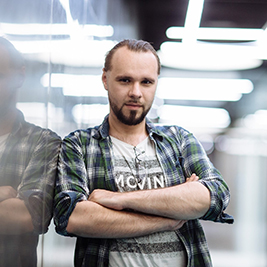Bank of Portraits / Dovzhenko Nazar and Natalia, Tatarchuk (Dovzhenko) Maria

Dovzhenko Nazar and Natalia, Tatarchuk (Dovzhenko) Maria
What can stimulate self-sacrifice, risk of one's own life for saving the doomed ones? Probably, for Nazar Dovzhenko and his wife Natalia from the village of Bilyaivka, Odesa region, their reasons were religiosity and education in the spirit of love for one's neighbor. Nazar was a churchwarden in the village temple and was deeply religious.
During the war, their area was occupied by the ally of Nazi Germany – Romania. The Odesa region, as well as the part of the Vinnytsia and Mykolaiv regions, were included into the Kingdom of Romania as the Transnistria Governorate.
In Odesa, the first bloody massacres happened as early as the Romanian troops entered the city. The Jews among the captured Soviet fighters, who did not manage to evacuate, as well as the civilians, were executed. On October 22, the explosion happened in the former NKVD building, where the Romanians established the commandant’s office and the division staff. Few dozen staff officers of the Romanian army and the city commandant Ion Glogojanu died. The occupiers responded with punitive action, killing approximately 5,000 people, primarily the Jews. The mass executions were performed by the Romanian “operative echelons”, as well as the German Einsatzgruppe D.
Except physical extermination, the discrimination and humiliation were practiced. The Jews were obliged to wear the yellow “David’s star” on their clothes. The men aged 18 – 50 passed the mandatory registration, and in December 1941 the occupation administration ordered them to come to the prison…
The Odesa region became the place of suffering and deaths of not only local Jews. Many jewish people from Bukovina and internal Romanian territories were deported there. They were sent to the camps and the sites of mass shootings near the station of Dalnyk, the villages of Bohdanivka, Akmechetka (current Prybuzhzhia) or the ghetto established in Slobidka, the suburb of Odesa.
That was the ghetto in Slobidka where, in accordance with the decree of the occupation authorities, Tsylia Yanovska, her daughter Betia and granddaughter Zaria arrived in February 1942. From there, together with the group of the other Jews, they were taken to the station of Kolosivka by train. There, Tsylia and Betia were shot dead in the ravine together with many others. The unknown woman pushed Zaria into the ravine a second before shot and then fell there, covering her by herself. This helped the girl survive after the shooting, as the police finished those who were alive.
Climbing out from the grave, Zaria went across the fields to the railway station. There she simulated that she lost her family with whom she came to sell bread. It helped her get to Odesa. There she hid in the house of Sofia Rykova, her father’s wife. Father divorced Betia Yanovska before the war and married again. In 1937, he was arrested as the “public enemy”. The woman agreed to give the girl shelter. However, it was dangerous to stay in the city for a long time, as there was a risk that the escapees could be recognized and reported by neighbors. In the case of Zaria and Sofia, it happened: the caretaker noticed an unfamiliar girl and wondered who she was, as Rykova had the only daughter and her husband died in the Soviet camps in 1942. That is why Sofia took Zaria to the husband’s parents in the village of Yasky. However, because of exposure risks, she was sent to relatives in Bilyaivka, to the family of Nazar and Natalia Dovzhenko.
Zaria stayed here until the end of the occupation. At the family of Dovzhenko, she found refuge, care and new name – Valentyna Tatarchuk. It was the name of the daughter of Nazar’s brother, Serhii. That girl died as an infant, but her birth certificate remained. It became the new document of Zaria. Unfortunately, Valentyna-Zaria had a conflict with the daughter of Nazar Dovzhenko, Melania. She even wrote a report on Valentyna. Nobody knows how the story of the saved and saviors could happen if Nazar did not learn about the report and intercepted it.
In April 1944, the Germans and Romanians were expelled from the region. Together with the occupation, the former name of Zaria remained in the past. After the Soviet regime was restored, she got the passport under the name Valentyna Tatarchuk.
In the following years, the life paths of the heroes of this story separated. Nazar Dovzhenko died soon. His granddaughter, the daughter of Maria Tatarchuk (Dovzhenko), lives in New Zealand. Another daughter of Nazar – Klavdia – went to Haisyn, Vinnytsia region.
On October 15, 2013, Nazar and Natalia Dovzhenko, and their daughter Maria Tatarchuk, were recognized as the Righteous Among the Nations. The diploma and the medal for the future handling to descendants were given to the daughter of saved Valentyna Tatarchuk, Olena Volokhova.

Maksym Milevskyi
Kyiv
The National Museum of the History of Ukraine in the Second World War
-
fingerprintArtefacts
-
theatersVideo
-
subjectLibrary



